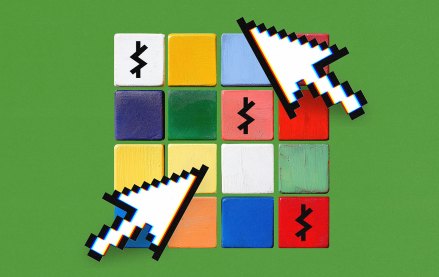Razorfish launches in-house creator offering as agencies grow content practice

As a Digiday+ member, you were able to access this article early through the Digiday+ Story Preview email. See other exclusives or manage your account.This article was provided as an exclusive preview for Digiday+ members, who were able to access it early. Check out the other features included with Digiday+ to help you stay ahead
Publicis Groupe’s marketing transformation agency Razorfish last week introduced a team of in-house social strategists and creators to expand its social media and content practice. Interestingly, it’s a rare instance where a holding company agency is building it from scratch rather than acquiring an external shop.
The Razorfish Creator Colab will provide social strategy, creative content and analytics to help brands develop their voices across social media using creators’ expertise. Of the 50 team members, half are dedicated creators who work together with the agency’s and Publicis’ larger social practice. Creator Colab builds on the agency’s Consumer and Content Experience practice, which developed some 400,000 content assets and more than 1 billion content views for its clients in 2023, according to the company.
While agencies overall continue to invest in the influencer marketing space, Razorfish hopes its in-house team will help it stand out unlike other agencies, which usually acquire other shops in the influencer space or develop proprietary influencer marketing tools and practices for partnering with independent creators. The creators in those latter instances are typically hired outside through a talent agency or other direct deals.
Cristina Lawrence, evp of consumer and content experience at Razorfish, calls this a “cultural-relevancy offering” that aims to fill a gap in the influencer marketing business.
“[Creators] can ride culture, connect with culture and really break through news feeds, especially with some of our younger demographics,” Lawrence told Digiday. “Creating an offering like that was really helping us to kind of supercharge the way that we can meet those moments authentically, and really meet consumer mindsets on the behalf of our clients.”
Creator Colab will focus on five areas: using trends with their in-house creators to create content, honing brand voices with audience engagement playbooks, creating tailored experiences for different social platforms, optimizing clients’ business objectives, and increasing efficiency through its cross-disciplinary specialists to form a one-stop shop on social and creative.
Stagwell’s approach
Other agencies have enlisted social and influencer agencies as these services grew. For its part, Stagwell last year acquired creative and social agency Movers+Shakers and this year bought influencer agency Team Epiphany.
In 2020, Movers+Shakers formed a team of full-time creators and other content staff, who have been elemental in “helping brands figure out emerging platforms” and maximize social budgets, said founder and CEO Evan Horowitz. “We have found that hiring in-house content creators drives agility. It allows us to innovate around our broad portfolio of socially-native production solutions and enables our clients to go live with trending content within hours of spotting a trend and pivot content quickly, if needed.”
Justin Lewis, chair of Stagwell’s Constellation network, which consists of 13 agencies including Movers+Shakers and Team Epiphany, pointed to how both these firms offer expertise in “experiential and multicultural marketing” to help brands plug into cultural moments on TikTok and other platforms.
“While Stagwell already had strong social and influencer capabilities across the network, in both instances, we felt these partners brought something unique to the table,” Lewis said.
In-house advantages
Influencer agencies say hiring in-house creators is a growing trend that allows them to scale and move quickly on new content and platforms as they experiment in new verticals. Razorfish’s Lawrence said Creator Colab is seeing more growth within social commerce as the platforms expand shopping features, and there is more potential for influencers in the pharmaceutical, finance and B2B sectors in the future.
“[With B2B], where it actually turns more to influencers is around thought leadership … so we’re rapidly expanding and always looking at what are the different ways that we can offer this authentic messaging and authentic moments to our clients who span all of these,” Lawrence said.
Full-service influencer agency HireInfluence also employs in-house creators. Amanda Grover, director of brand management at the agency, said this brings “fresh perspectives” and deeper understanding of the audience to the team. “Another advantage of having in-house creators is the opportunity to utilize them across multiple campaigns … compared to one-time projects.”
Others contend there are other models besides going in-house — agencies can still scale social content quickly by developing creator databases and rosters. These influencers “are pre-approved or campaign-tested for specific brands,” explained Kelly Dye, vp of influencer strategy at Acorn Influence, which does not have a roster of internal creators.
“What would worry me as a hiring manager, is the fact that the goal for an influencer is typically to quit their 9-to-5 so that they can focus on their influencer career full-time,” Dye said.
Joey Chowaiki, COO and cofounder of Open Influence, agreed that the influencer’s job description is still evolving in this market. Influencers are going beyond the “faces of activation” to being a part of the broader campaign development, Chowaiki explained. Open Influence previously had in-house creators and hired its first creator as the head of creators about 10 years ago.
“While the idea of employing creators as full-time staff members might seem appealing, it’s crucial to remember that creators already have a full-time job — creating content,” Chowaiki said. “But we should involve them beyond traditional employment models. For instance, instead of hiring a production team, bring in a creator who’s amazing at production; instead of just utilizing the in-house creative team, have a creator collaborate on the brief.”
More in Media Buying

As Integral Ad Science marks its fourth anniversary on the Nasdaq, speculation mounts over its future
Efforts are underway to take IAS private but there are varying levels of interest from private equity groups.

Media Buying Briefing: Two years later, media buyers still aren’t fully sold on The Trade Desk’s Kokai platform
Two years after its launch, The Trade Desk’s Kokai tool has acquired a mixed reputation among the agency media buyers it was designed for.

The Rundown: The regulatory hurdles still in the way of the Omnicom-IPG merger
British, Australian and EU regulators are all looking into mega agency merger.







